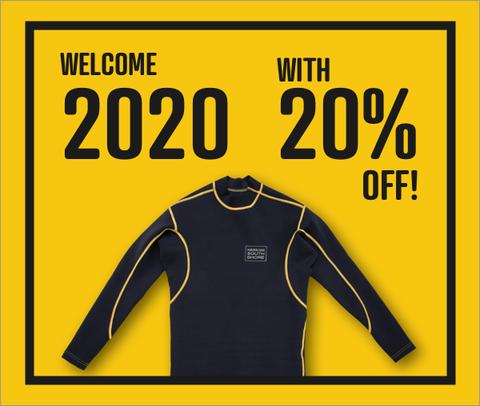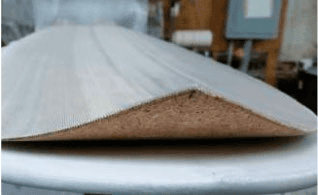Hawaiian South Shore February 2020 Newsletter
NEWSLETTER FEBRUARY 2020

Making Sense of the New Wave Pool Era
It seems like only yesterday Kelly Slater dropped the first edit of him riding endless barrels at the Surf Ranch, and yet here we are, four years later, with dozens of wave pools popping up all over the world. Sometimes it’s hard to keep track of them all, which is why we have created a guide to some of the best pools currently in operation.
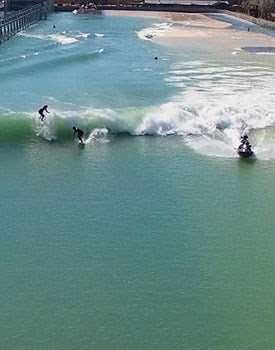
Photo credit to @kswaveco Instagram
- The Surf Ranch: Still the wave pool against which all others are judged, Slater’s creation is pretty close to a perfect wave. It’s 2000 feet long, around 5-6 feet tall (on the face), peels both left and right, and provides numerous turn sections and barrels on each ride. The world tour stops by every year for an event, and the train that pulls the hydrofoil runs nine months per year for private guests. The only problem is that it costs $50,000 per day to rent the place out, and there are only 12 waves per hour (six rights and six lefts) since it takes about five minutes between rides for the water in the pool to settle down. The perfect wave? Yes—but for now, only accessible by the rich and famous.
- The Cove: Wavegarden was the first company to come out with an operational wave pool, but it was quickly overshadowed when the Surf Ranch was unveiled. In an attempt to remain relevant, Wavegarden has revamped its system with something they call The Cove. Operating on a similar principle as the Surf Ranch, The Cove sees a hydrofoil running through a basin, creating chest high waves with occasional hollow sections. While not as big, long, hollow, or perfect as Slater’s wave, The Cove is accessible to the public, and that’s saying something. There are currently a number of Wavegardens in operation, including in Spain, the UK, and Melbourne, Australia (which looks like the best one yet). There is a handful more under construction, and around 20 around the world in the developmental stage.
- China’s Surf Ranch Ripoff: We aren’t sure if this pool has a name, or if it’s even currently working, but last year China revealed what is essentially a copy of Slater’s Surf Ranch, constructed by the Chinese government for future Chinese Olympic surfers to train in. They claim to have five of these things in development—but it’s going to take a lot more than a $50 million investment to prepare China to surf in the Olympics.
- BSR in Waco: The people’s answer to Slater’s exclusive Surf Ranch, the BSR water park in Waco opened a wave pool two years ago that runs on a completely different system. Using air propulsion to create waves, the pool can be customized to any number of different settings, creating points, wedge, and barrels. The “Super Wedge” is the setup we see in the media most often, with pros launching enormous airs and Stab Magazine running their Stab High event on the oversized wedge. Unfortunately, normal customers who don’t want to pay to rent out the entire pool have to be content with a much less exciting wave that, while still fun, doesn’t offer the barrel and boost the potential of the customized waves the pros enjoy.
- Surf Lakes in Brisbane: Located an hour outside of Brisbane, the Surf Lakes wave pool is possibly the most original and unique concept—but it still hasn’t proven itself to be logistically viable. The pool has a huge industrial plunger in the middle of it that gets pushed up with steam, then plunges down and creates a miniature tsunami ring of sorts, which resonates out toward five different reefs, including a slab, a rippable barreling peak, and a few mellower waves. Although this model has the most potential for providing lots of waves to lots of people for a pretty affordable price (the plunger can create 10 waves per minute, and each wave hits five peaks, for a total of 10 surfable waves), it has broken down numerous times, has yet to be turned up to full power, and thus far has only been surfed by a handful of pros and investors.
Active Skin Repair—The First-Aid Kit in a Bottle
If you surf long enough, getting injured is inevitable. Hopefully, it’s something minor, like a reef scrape or a jellyfish sting—but even then, it’s important to treat those injuries properly so that you don’t get infected and you heal quickly. For years, I’ve been taking a first-aid kit with me whenever I travel—both on surf trips and non-surf trips—but I’ve always wished there was one product that could take care of everything for me.
Well, now there is! Active Skin Repair is like a complete first-aid kit in a single, three-ounce bottle. The product comes in both a gel and spray form, and it does just about everything you could hope for. It disinfects cuts and scrapes, helping to prevent infection. It also alleviates inflammation from bug bites, jellyfish stings, sunburn, and even other types of burns, such as those from hot water or oil. The product is able to so because it contains the same molecule that the human body uses to heal itself. It is natural, non-toxic, antibiotic-free, kid-safe, and non-sensitizing (which means that it doesn’t sting when you put it on an open wound). In fact, some parents have even used it to help treat their infants’ diaper rash, and some people actually use it on their pets too!
When I first learned about Active Skin Repair, I was intrigued. And I wasn’t the only one. The World Surf League found out about it in 2017 and decided to test it out at their Fiji event. The WSL doctors used it on all the athletes’ reef cuts, and the week after the event they called up Active Skin Repair and ordered tons of it. They now use it for every event and often end up sending athletes home with it. The BWRAG big wave guys have been using it too, and find great success with it.
The gel is great for stings and burns, and also for wounds that require stitches, while the spray is easy to apply to scrapes and small cuts. Damien Hobgood is a team rider, and a while back was on a trip to Fiji when he took a foil board blade to the head. It sliced his head open, but he simply put some of the gel in the wound, then had it stitched up. He surfed the rest of the trip, reapplying Active Skin Repair after every session to mitigate infection risk, and went home with a healing head!
Gerry Lopez has also been using the product and says it's the product he’s been looking for—something that can treat jellyfish stings and sunburn, as well as all of the bumps and scrapes he inevitably gets when he is out chasing tropical barrels. And the most convenient thing is that the product is intentionally bottled in travel-legal three-ounce packaging, so TSA will let you carry it on when you are chasing waves. With a two-year shelf life and all of the convenience of a full first-aid kit, Active Skin Repair is the cure-all that you didn’t know you needed. Make sure to grab some before your next trip, or even just for your next session on the Ala Moana reefs!
Interested in getting Active Skin Repair? Click HERE...
DAN MANN ANSWERS QUESTIONS ABOUT HIS NO BRAINER MODEL
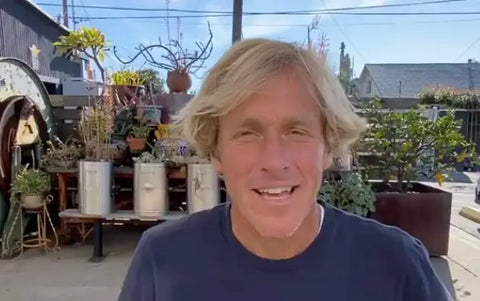 Dan Mann is an avant garde surfboard designer and shaper who has recently joined the stable of shapers at Slater Designs. Dan recently took the time to answer some questions about his No Brainer model, covering topics such as fins, sizing, skill level, ideal wave, and more. If you’ve ever considered adding the No Brainer to your quiver, here are some guidelines straight from the man who created the board.
Dan Mann is an avant garde surfboard designer and shaper who has recently joined the stable of shapers at Slater Designs. Dan recently took the time to answer some questions about his No Brainer model, covering topics such as fins, sizing, skill level, ideal wave, and more. If you’ve ever considered adding the No Brainer to your quiver, here are some guidelines straight from the man who created the board.
Fins: The No Brainer works best with a quad setup, giving you drive and speed through flat sections when you are groveling. Use your favorite template upfront, and then a slightly smaller template for the trailing fins. The reason for this is that the board is pretty narrow up front (compared to Dan’s other boards), so you want slightly less fin in the trailer.
If you decide to go with a thruster setup (which is better in the pocket), do the same thing in terms of fin selection—go with your favorite front fins, then use a slightly smaller trailing fin for your middle fin. (Here at Hawaiian South Shore, we suggest the Power Twin with Trailer setup for the No Brainer. You get the drive of a twin fin, but also the added stability of the trailing third fin. We find that the board really goes top to bottom with this setup, giving you the best of both worlds—speed and maneuverability.
Volume: When it comes time to pull a No Brainer off the rack, some people may find that Slater Designs doesn’t make the board in exactly their preferred volume. In that case, opt for slightly more volume than you normally ride. Generally speaking, a little more volume is going to give you more paddle power and speed through flat sections, without really handicapping you in your turns. Foam is your friend, and the extra drive you get will more than compensate for any extra effort you have to put into your turns
We used to always pick outboards based on length, width, and thickness, so volume is only a recent consideration. These days, using the volume calculator can be handy, but if you don’t know what volume you need, think of your height and stance, as well as the feeling you want to have on the type of wave you usually surf. If you are a tall, lanky person with a wider stance, you are going to be on top of the board more. So even if you are riding a board with the right volume, if it’s super short, that is going to change the feel. It’s a matter of personal preference. Try out different lengths and shapes, taking into account your height and the volume you want. But also take into consideration the style and size of the wave you are going to be surfing. Eventually, you will find what works best for you.
No Brainer Rocker Versus Other Dan Mann Boards
The entry rocker of the No Brainer is very similar to the rocker on Dan’s different Potato models. The bottom contour is slightly different, however, and the relationship between the rocker and bottom contour is also a bit different. The No Brainer looks flatter than it actually is because of the way the deck rocker comes down and is really thin and bladey in the tail.
Kalani Robb’s Role in the Design of the No Brainer
Kalani was the guy who fell in love with the No Brainer first, and who seemed to like it the most. Slater liked it but was using other boards on tour, so he didn’t get to spend as much time on it as Kalani. But the original concept of the board came from Slater.
Using the No Brainer in California Versus Florida
It really doesn’t matter where you are surfing. Waves are waves, and the No Brainer is a great grovel option in average waves. Whether you are surfing it on the East Coast or the West Coast, the important thing is to have fun.
February Member of the Month
Q & A with Pedro
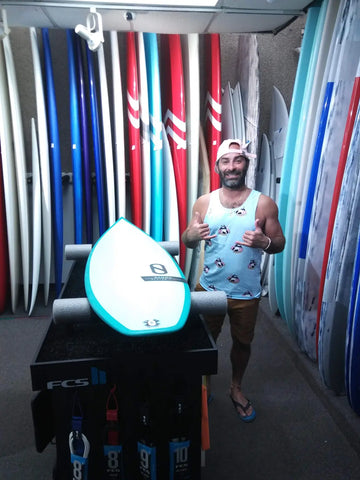
When and why did you initially get into surfing?
My first memory of surfing is back in California when I was in Elementary school. My Tia Tomasa, and Tio, Big Jose sent me, my brother Josh, and my cousin Jonathan to a surf camp at Sunset Beach on the California Coast. This spot is particularly known to have dolphins in the line-up. After, I didn’t have a chance to surf much as I lived too far inland, although surfing was always on my mind. When I moved to Hawaii surfing became a major part of my lifestyle. I was attending UH Mānoa and had a student-professor named Don, who was really cool, and we began to surf together. Because of this, we became really good friends and have surfed and hung out ever since.
What is your favorite thing about surfing?
The first thought I had was, “I love everything about it. Especially catching one wave and feeling the stoke when you shred it!” I’d have to say that my favorite part of surfing is the social experience. There are so many people in the water that I only know from surfing, or I only experience time with them while surfing. In a climate where there is a divide, I feel that surfing brings us together. The Aloha that accompanies the surfing experience is very real. I love being able to text one of my friends or getting a text to go surf that day or when the swell is about to come. It makes life feel complete.
The people in the water are amazing. You see surfers at different breaks, see how they surf, the board they ride, and the stoke they have after catching a wave. The social experience of surfing allows you to learn etiquette about the line-up, priority, and respect for the locals at each break. You may not know what the person next to you does for a living, where they went to high school (maybe you know this), or how many siblings they have, but you know that surfing gives them happiness, that they watch Game of Thrones just like you, talk about what types of boards they like to ride, the fins they like to use, and where they like to surf for different swells.
Regardless of background, surfing unites people without judgment. For me, I feel that surfing has no boundaries and brings people together through the common love for surf and its accompanying interpersonal and social experiences. For that alone, surfing is my favorite thing.
What other hobbies do you have besides surfing?
I would have to say that surfing is my main hobby. I love watching surf reviews, such as Noel Salas’ Surf n Show, which used to be the Shred Show, and the Firewire interviews are always good. Another show I watch is Stab Magazine’s “Stab in the Dark,” and “The Joyride Board Test.” During the WSL season, I keep up with the surfing comps, especially the surfers of Hawaii. Side Note: Congrats to Carissa Moore for winning the championship! Outside of surfing activities, I play the ukulele, guitar, keyboard, I practice art, read some cool books, stretch, make food at home, BBQ on the beach, hang out with my great friends, spend time with my family, attend church on Sunday’s, and hang out with my cat, Luci.
Tell us about the board(s) you recently purchased from us. What model and size is it, and how do you like its performance?
Since summer I have purchased two boards from HSS. The first one I purchased was the Slater Designs Cymatic model by Firewire. I had been riding a Lost… Libtech Puddle Jumper (5’ 01” x 19.5 x 2.25 x 25.5 liters) for about 2 years. I really loved that board, but I was looking for a board that grips the wave a little better, especially on bottom turns and critical parts of the wave. I went to HSS and they had a Cymatic on demo that was the exact size I was looking at (5’ 03” x 18 5/8 x 2 5/16 x 25.4 liters). I was super stoked that they had this board to demo so I held that board, I knew it was time to order one, so I did!
Do you have any additional comments?
One of the reasons why I chose HSS to purchase my boards is not just the superior quality of service and aloha they provide to their customers, but the option to choose financing. HSS has partnered with Synchrony bank for an in-store credit card. I don’t remember the specific details of their financing options, but the Synchrony store card at HSS offers both 0% financing for 6 and 12 months, depending on the amount of the purchase. In addition, they have an incredible selection of Firewire Surfboards, which are currently my favorite boards due to their construction, selection, technology, and engineering.
A big mahalo to HSS for selecting me to be in the February newsletter. I appreciate you contributing to my surfing experience and for the incredible customer service. Mahalo and Aloha.
What is New, Reviews and Who Stopped In at Hawaiian South Shore
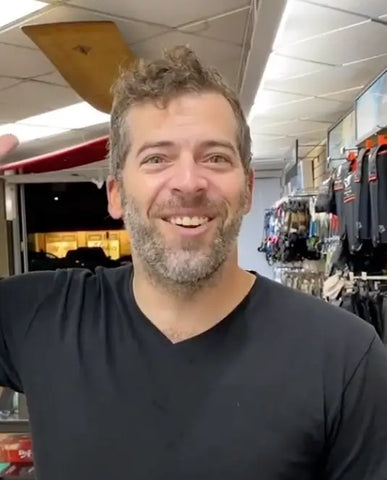 Brent who got a Libtech Puddle Jumper from wanted to get something a little more performance but with that paddling power. I recommend my favorite JS Black Baron. He was very skeptical and looked around at a few other boards and return I think a few more times and finally pulled the trigger.
Brent who got a Libtech Puddle Jumper from wanted to get something a little more performance but with that paddling power. I recommend my favorite JS Black Baron. He was very skeptical and looked around at a few other boards and return I think a few more times and finally pulled the trigger.
A few days later when he finally rode it at Rock Piles he came in right after his surf to let us know that he had one of the best 90 mins of surfing. Even with lots of longboards out he caught a lot of waves. The first thing he notices was how easy it was to catch waves and how fast it was.
If you go to our Instagram page, under the IGTV section, we have our video categorized. Check out the JS review section.
The JS Black Baron is just a pure fun board that is fast, easy to surf and loose. It’s the one Parko after retiring has been using for over 8 months. He said he just can’t get off the board it just so fun, he also rode it in the Maldives Contest and won…I can understand why he looked way better than most of the guys surfing other twins.
Noel Salass the guy that does the Surf n Show Review did a review he seemed to like it OK but he should have used the fins that are recommended for this board with is the Power Twins for FCS or EN for Futures. I’ve tried a few other fins and I liked it with the fins that are recommended. I’ve talked to a few others that experimented and most agree.
Ahren P— said he finally had a chance to take out his Harley Ingleby HI4 that he got from us and he said “Fricken HI4 board is mean. Like floating on air!”
got from us and he said “Fricken HI4 board is mean. Like floating on air!”
I have to agree that HI4 is a favorite with the team riders in Hawaii. They like to surf in small to medium size days. It’s a Harley’s HIHP which he won a world title on and took that board and left the volume the same but made the board wider for better paddling and noseriding.
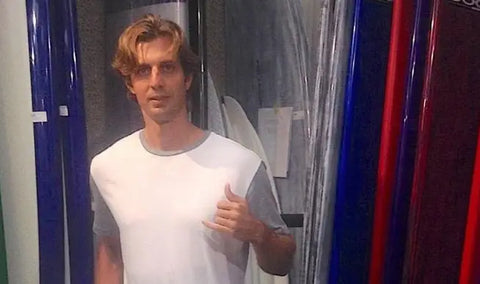 Joseph— The CJ Nelson Sprout is a board that’s been around for a long time and many other famous longboarders called it the best riding log of all time. Joe Calabrese gave got his board a while back totally agrees on the shape and the technology.
Joseph— The CJ Nelson Sprout is a board that’s been around for a long time and many other famous longboarders called it the best riding log of all time. Joe Calabrese gave got his board a while back totally agrees on the shape and the technology.
“Yeah, definitely nice boards! They ride as nice as they look. I’ve owned different nose rider designs from different shapers and the CJ Sprout noserides as good if not better than all of them.
It also turns amazingly well for size.
When the waves get some power the boards come alive and are very responsive.
Much different from poly boards.
I am very pleased with my purchases. Much thanks to @hwnsouthshore and @mark_nelson_1209 for helping me out!”
Latest Update on My Knee Injury
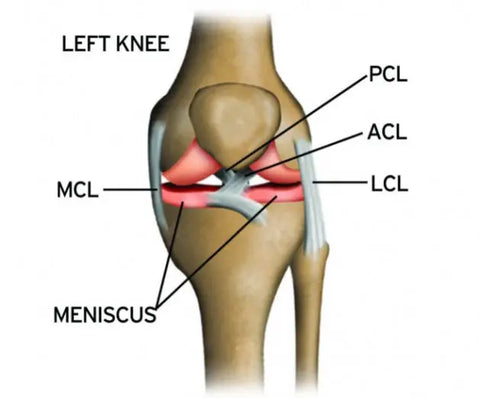
As you may remember, I have been dealing with a knee injury for the past six months, and recently considered whether I should get surgery or not. I recently went to see an orthopedic surgeon and get a second opinion, and he told me some interesting things.
First of all, he told me that I have a major (but not complete) tear of the ACL and a minor tear of the meniscus. But he believes that I don’t need surgery and that I can instead do a bunch of rehabs and strengthening to stabilize my knee rather than having surgery. It turns out that a lot of athletes are able to deal with injuries such as mine without surgery, and my ortho thinks that I can do the same thing.
To help stabilize my knee, I have been testing out a number of different braces. I was using a metal brace, but it kept riding up my leg and out of position, so I started looking for a different one, I found one that has plastic in the joint and in the leg supports, and that works really well for me. It only cost $125, which was a lot cheaper than some of the other braces I was looking at.
The orthopedic surgeon was also concerned that I had arthritis in my knee. Arthritis is basically when the cartilage between bones is worn away so that you have bone on bone grinding. Fortunately, after having standing x-rays done of my knee, it turned out that I don’t have arthritis after all! That was great news and a big relief for me.
Once I was done seeing the orthopedic surgeon, I went to rehab, where they taught me a bunch of exercises to help strengthen and stabilize my knee. Some of the exercises I have to do include a seated table hamstring stretch, a standing gastroc stretch, a single-leg cone pickup, a stair step up, and a sitting chair squat exercises. The exercises all seemed really simple and easy, but once I was done my knee was actually pretty tired and a little bit sore. But I iced it, and after 15 minutes it was feeling a lot better. Now I just have to keep up with my exercises, use my brace, and hopefully, my knee will get stronger and more stable!
It’s amazing how the body is able to heal itself, and how we are able to recover from injuries, often without surgery. I am super thankful for my health and the ability to do the sports and activities that I love. I hope that you all enjoy good health this new year as well!
Lost Surfboards C4 Construction
C4 surfboard construction is built by wrapping a 1.5lb EPS foam
core with 1.5mm Cork on the whole deck of the board. The Cork
deck serves as a performance-enhancing dampener, and also
dramatically increases strength. By layering glass both between
the Cork and the EPS core, as well as wrapping over the cork
and around the rails, Lost created a “sandwich” with incredible
impact and impressive tensile strength and durability, while
remaining lightweight.
